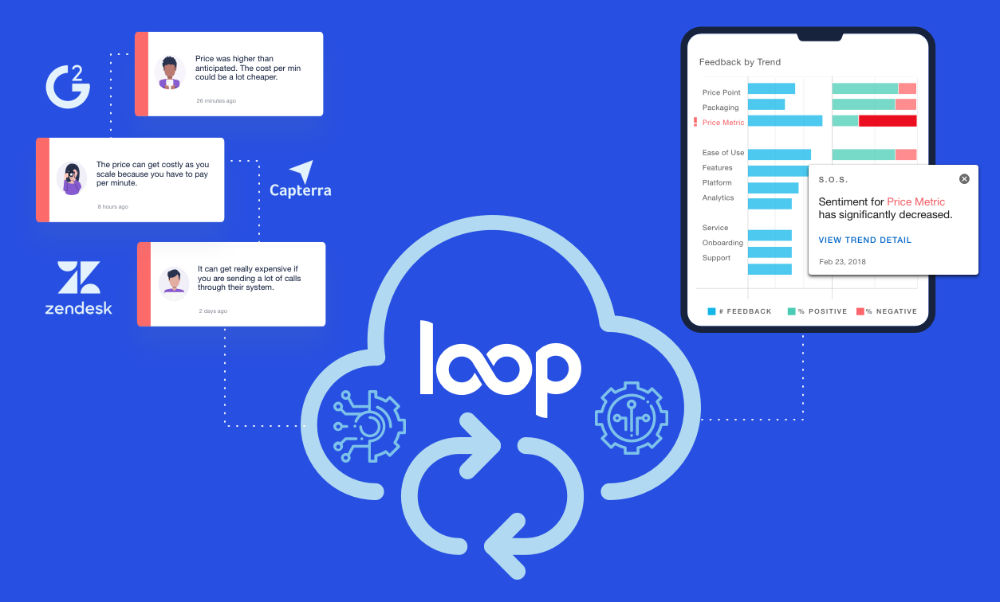Home » Removing the Red Tape from Cross-Functional Collaboration — Fighting Churn Means All Hands On Deck
Removing the Red Tape from Cross-Functional Collaboration — Fighting Churn Means All Hands On Deck
Madeline Turner

We’ve been saying that it’s “The Year of the Customer” for years now.
Now we get to see how well we’ve really done to make this rally cry a reality.
We’re fighting customer churn and working to protect revenue in a way that many of us have never had to do before. Nice-to-have technology has been cut in order to protect costs as we work to make it through this economic downturn.
While in many ways this is a waiting game, we don’t actually have the luxury of sitting around and waiting to see how things will play out. More than ever, this is a time for teams to hunker down and focus on the strategies that will have the greatest impact.
The strategies that will have the greatest impact for our businesses will be those that deliver the greatest impact for our customers. If the actions you’re taking now are not bringing value to those you serve, it’s time to throw them out — they expired March 2020.
Now is the time to focus on what works and deliver products and resources that help customers achieve success through this time.
To facilitate cross-functional participation during this time, organizations will need to:
- Share Data
- Share Goals
- Share Responsibility
This may mean that roles and responsibilities are redefined. This kind of change is expected in order to pivot strategies and survive uncertain times.
Breaking Down Customer Data Silos
There’s a common problem across many SaaS companies. In an effort to define roles and responsibilities across teams and departments, we’ve inadvertently created a culture of siloes — what is mine is not yours, specifically when it comes to sharing data. Whether because of painful RACI exercises or internal politics, we’ve created a culture that encourages protection rather than collaboration.
This means that even if individuals or departments have the best of intentions to prioritize Voice of Customer programs, those chosen to lead the effort are fighting uphill battles to get access to the data and information they need to create a holistic picture of customer feedback. We may “know” that there are issues with customer satisfaction at specific touchpoints with our organization, but we lack the holistic data needed to prove our case.
How to combat customer data silos:
- Define the data and access needed to bring voice of customer data together in one place.
- Get leadership support and buy-in for data sharing across the organization.
- Educate stakeholders on the data needed, why it’s needed, and how it will be used.
- Create shared goals around value-drivers rather than just performance metrics — ensure that the goals are about meeting customers’ needs, not simply justifying salaries and bonuses.
- Establish a team of contributors that meet regularly to analyze, understand, and create action plans based on the insights.
- Create shared visibility across teams so that there’s ongoing visibility into how the data is being actioned on and the impact of those actions.
Establishing Shared Goals
When the responsibility of the customer experience relies solely on specific departments, it relieves all other teams of any measurable obligation. Unless all teams are held responsible and accountable, we’re limiting the scope of impact that other teams and individuals can contribute.
If individuals and teams don’t feel that they can have a meaningful impact on something — or if they have no real goals that encourage contribution — how can we expect to create a culture that fosters collaboration and innovation around the customer experience. It’s difficult to be customer-centric if we’re not empowering all team members to participate and measuring success.
How to establish shared responsibility for customer retention:
Customer retention falls on everyone. While some teams play more frontline roles in managing the day to day customer relationships and securing commitment for renewal, the entire organization must feel that they have a stake in preventing customer churn.
Helping customers find value in their partnership with your company touches every team, not just Success. This means that every individual must fully understand why and how their role impacts customer satisfaction and retention.
- Marketing – from demand to operations, the resources and engagement opportunities shared throughout every stage of the journey must be coordinated to guide customers to achieving success with your product. If the content and nurtures created are not done so through the lens of offering value, you’re missing opportunities.
- Sales – We have to close deals – it’s the lifeline of our companies. But equally as important is selling based on need and value. Selling products or services that a customer does more long term damage than good. Our sales teams must be empowered to truly listen to customer needs, build relationships, and understand where there are true opportunities for partnership. It’s not about closing deals, it’s about identifying opportunities.
- Support – Customer support teams have a significant opportunity to be revenue generating and value-driving teams. Rather than just reactively solving problems, they’re primed to also proactively identify need and opportunities. The scope of their responsibility should not be limited to just pinpointing problems – these teams are direct contributors to understanding gaps in product, education, and onboarding.
- Operations – This team plays critically important roles behind the scenes in ensuring that the processes, technology, and reporting structure exists to run our businesses. These teams are the engineers of successful collaboration. Rather than solely harvesting value for our businesses, they’re harvesting value for our customers – ensuring that we’re primed to deliver the partnerships and experiences we promise our customers.
- Product – Nothing else matters if our products don’t solve critical problems or provide innovative solutions. The best marketing is good products. This team is essential in understanding customer needs and delivering value quickly.
- Success – These teams own the post-sale relationship, they understand their role in helping customers find value. The best success organizations are also focused on driving usage, feature adoption, and revenue. These teams aren’t just making sure that customers are finding value in what they have today, they’re ensuring that customers understand and realize the full potential of your product and partnership.
Every team across the organization must understand how they contribute to retention and revenue. The only way to be all hands on deck is to give everyone clear responsibility. This isn’t about one-off initiatives, it’s about establishing a culture of shared goals and responsibility and knowing that everyone plays a critical role.
Sharing Responsibility
The truth is that our lanes will be blurred and our scope of responsibility widened. These are difficult times but they are also a time for our people and our teams to deliver value and results in a new way — for our culture to truly shift.
To ensure that there is constant alignment, teams should be meeting daily or weekly to discuss progress, learnings, and go-forward actions. Bring together stakeholders from every department, give every member a role, and never leave a meeting without assigned actions.
- Provide quick updates on progress to goals
- Are the things we’re doing moving the needle in any way?
- Have there been changes that impact progress to goals or projections?
- Go through the actions plans
- What’s the status of each action?
- Should things be deprioritized in order to account for new opportunities?
- Are there any blockers that the team should discuss?
- Discuss people, customers, and operations
- How is the team doing?
- Are there updates from customers (wins or losses)
- Are there process or financial changes that leaders need to be preparing their teams for?
Saving customers, protecting revenue, and offering value to customers through this time is company-wide, so every department needs a seat at the table in these meetings.
Tools to make analyzing feedback, taking action, and creating visibility even easier:
With tools like Loop, teams can easily integrate feedback channels and survey responses to see common feedback trends in real-time. Quickly understand and align on the risks and opportunities related to retention and revenue, and create the action plans to address.
We know this time is not easy. We’re in the trenches, making difficult decisions, and trying to do what is best for our company and our customers. Be nimble, move fast, stay aligned, and keep your customers front and center.



